■ We know you are a versatile person: Researcher, culture historian, Istanbul lover, modern traveler… How would you describe yourself?
First of all, I am a curious person. I would describe myself as someone who greatly enjoys learning, who will hopefully never fall out of love with learning, and who feels responsible to teach the others what he has learned. I do not only mean the knowledge in books. I see myself as a person who passes on the teachings of those before me and my elders -through experience- to younger generations.
■ In this context, what is your view on the culture-art world of our day? The quality of books published, films and series produced, and alike…
There is significant progress in some fields. I could tell you about several exciting projects. Film titled ‘Ertuğrul’ was made as a Turkish-Japanese co-production. Film narrating the tragic story of Ertuğrul Frigate which sailed to Japan from Istanbul to bring gifts from Ottoman Palace and sank on its way back, is soon to be released. We expect the film to be screened in G-20 Summit to take place in November. ‘Ertuğrul’ is an important production realized with a significant budget, crew and efforts. Apart from that, serious cultural activities were organized for the 100th Anniversary of Çanakkale Victory. Again as Turkish Republic Ministry of Culture and Tourism, we launched a project titled “City and Culture” with the aim of improving the cultural levels of cities and increasing the number of activities organized at those cities. We have been witnessing that our youth cannot sufficiently benefit from richness of Turkish language because in recent years technological devices are intensely used for communication. Right at this point Yunus Emre Institute’s mission is crucial. “Sound of 1000 Years Turkish Language Festival” organized last summer, was a highly successful event. I also closely follow ‘.tr’ magazine, language, culture and literature publication of Yunus Emre Institute and deem it successful. We are currently working on a project titled “Secrets of Turkish Language” as Ministry. This project aims to correct the deficiencies in youth’s use of Turkish language.
■ We know your passion for traveling. Let’s continue on this axis if you like. You say “I do not care how many countries one has traveled to if one does not know the Fountain of Ahmed the Third”. What if we ask you the “must see” destinations in Istanbul?
I see travel as a ground of training rather than a passion. And then as a ground to show and teach… Setting off from here, those who wish to discover Istanbul as a water and poetry civilization must visit the Fountain of Ahmed the Third in Sultanahmet. Second is the Water Tank of Hagia Sophia. For me, this water monument people wrote poems for is a mustsee in Istanbul: “A thousand mansions on the ground, anyone who sees adores it. Such a beautiful water tank has not been or will be built.” These praises for the water tank also show the interest and intellectual level of people in the Ottoman. There is a humble fountain at Çınaraltı Square in Emirgân as well. This monument, a part of Abdul Hamid First’s Social Complex was adorned by the biggest calligraphist of the period, Yesari Mehmed Esad Efendi. Fountain’s marble and stone masonry aside, one must go to the open air coffeehouses and have tea across the fountain to watch its beautiful lines and this richness. This was a common pleasure in Ottoman era, visitors would read and understand the inscriptions adorning the fountain, and view the finesse of calligraphic arts. Now how many are there who can do this? This is a question that needs answering. If we continue… Mehmet Emin Aga Drinking and Public Fountain on Fındıklı Avenue from Karaköy to Dolmabahçe is a perfect İswater monument. Near that is another excellent example of fountain composition in Zevki Kadın primary school. Again in Eyüp Shah Sultan, there is a very elegant primary school fountain. And Topkapı Palace… A fantastic fountain catches the eye right before Display Hall. Besides you come across one of the best cascade fountain examples in Istanbul inside the Harem. You cannot drink from or perform ablution at cascaded fountains. The acoustic of flowing water is to benefit from. So that when water falls it enlivens your eyes with its sight and your heart with its sound. People in psychological distress were taken to cascade fountains in the Ottoman era.
■ Which cities should a person visit and know about, to be able to say “I know Turkey”?
First let me stress this: Istanbul is a city that unifies Anatolia, Turkey and even Ottoman in itself. This means there is no point and value of seeing others before visiting Istanbul. In other words, if you see Istanbul in all its detail, you will have discovered the most excellent monuments of the entire Ottoman geography. I place special emphasis on Istanbul in this sense. One of the most practical ways of getting to know Turkey is to visit old Turkish capitals like Konya, Edirne, Bursa and İznik. We have a project titled “Pleasant Ottoman Towns” we are still working on as Ministry. Here we determine rooted settlements which still preserve the architectural texture and most importantly the spirit. At this point Safranbolu, Amasya, Kastamonu and Beypazarı stand out. My favorite is Güdül, known only by a handful of people. This district near Ankara is a location where daily life continues in all it authenticity. Taraklı, Mudurnu, Göynük trio is in the vicinity on the historical Silk Road. You may also include Cumalıkızık, Birgi, Kula and Tire.
■ In your books as ‘From Nile to Danube’ and ‘Praising Danube’, you narrate the cities you have visited in old Ottoman geography. Which places impressed you the most?
Damascus I call my first love, where I lived and studied for a while has a different place in my heart. So does Jerusalem where I had the chance to visit several times… Although its texture is degenerating, I adore Skopje around the Old Bazaar. I always find Thessaloniki worth seeing and exploring. I am a historian who knows the history together with its monuments. I wonder and go to find the source of Danube River. Or I search for the coffeehouse in Thessaloniki where Party of Union and Progress was first established. Then I wonder the current state of the mansion where Sultan Abdul Hamid II lived in exile in Rumelia. These all give me great joy.
■ You state that a journey embarked on without reading and getting prepared prior to it, is just an effort in vain. For example, what to read to make the Rumelia (Balkans) journey you like a lot, efficient?
Before I start my journey, I make sure to read about the places I will visit. What I read pushes me towards there; I say to myself “I definitely must visit that destination.” I care about memoirs in this sense. But before that learning to read a map… When you enter from Alexandrapolis, which road leads to Macedonia and which to Xanthi and Komotini? One must know. For instance ‘The History of Banditry in Macedonia and The Last Ottoman Administration’ by Tahsin Uzer can be read. Also the books by Necati Cumalı, Yaşar Nabi Nayır and Yahya Kemal Beyatlı are good sources for Rumelia journeys. Not only before or during the journey, I also read when I return from the journey. This way I will learn all about the subjects on my mind on the destinations I visit. If my curiosity is not satisfied, I can visit a destination countless times. For instance I visited Thessaloniki more than 20 times. And I will again if I get the chance.
■ Let’s talk about places you would like to visit but have not for various reasons. What are the destinations on your travel list?
These days I am more interested in small scale nature excursions. Waterfalls, water sources, black lakes on high summits, mountains difficult to cross… And I also like to discover river banks which vitalize cultural basins. Lately I am interested in Yenisei River rising from mountains of Siberia and Mongolia. There are various communities in the region who speak Turkish and have animistic beliefs. I believe we must contact them. The books and texts I read on Siberia might have influenced me. Let’s say if it is written in the stars, if there is an occasion and if God allows, we will hopefully visit.




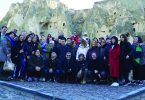
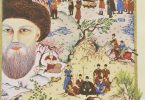
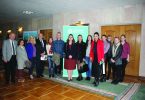
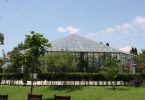
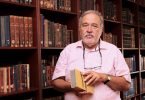
Leave a Comment